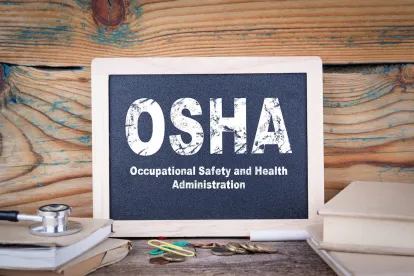Since the outbreak of COVID-19, the Occupational Safety and Health Administration had limited itself to issuing general guidance concerning COVID-19, as opposed to specific rules or standards. On Thursday, however, OSHA announced that it will issue its first standard specific to COVID-19 for healthcare workers. Although the standard is temporary, it creates significant obligations for healthcare systems, assisted living facilities, home healthcare providers, and other OSHA-covered entities that employ healthcare workers. It also further signals that OSHA likely will issue specific COVID-19 standards for other industries in the near future.
The standard imposes several specific requirements. It requires covered entities to conduct hazard assessments, maintain written plans designed to mitigate the spread of COVID-19 and provide specific protective equipment to certain employees (including N95 respirators in certain circumstances). It also requires covered employers to take specific steps to maintain six-foot distancing between employees (as well as between employees and others in certain situations). It contains new rules requiring covered employers to take steps to separate any employees with COVID-19 from others by providing certain leave and remote working options to those employees, as well as providing leave to employees in order to get vaccinated. It does, however, exempt fully vaccinated employees from certain masking, distancing, and barrier requirements when there is no reasonable expectation that any person will be present in the same defined area who may have or did contract coronavirus.
As most healthcare employers know, OSHA and other agencies have been particularly vigilant in monitoring and enforcing safety-related obligations in the healthcare space. So, even though many entities already were taking many (if not all) of these steps even before the standard, it is important for covered employers to review the standard in detail and ensure they are satisfying all of the specific requirements. OSHA provided a more detailed fact sheet concerning the rule here and provided the full text here. The rule will become effective in the near future (as soon as it is published in the federal register), and employers must begin complying with many provisions within 14 days after that (and with all provisions within 30 days).
Finally, this new rule serves as a reminder that government entities are not yet finished updating their rules and guidance concerning COVID-19. Even though the spread has decreased, all employers should expect federal, state, and local authorities to continue issuing updates and changes for at least the near future, and should continue monitoring for guidance from entities such as the Department of Labor (including OSHA), the CDC, the EEOC, as well as state and local agencies.




 />i
/>i

